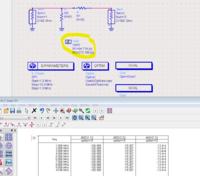neazoi
Advanced Member level 6

- Joined
- Jan 5, 2008
- Messages
- 4,157
- Helped
- 13
- Reputation
- 26
- Reaction score
- 15
- Trophy points
- 1,318
- Location
- Greece
- Activity points
- 37,198
Hello, I am onto the design of an RF mixer that requires a 50R RF in and a 300R LO in.
My LO has an output impedance of 50R.
How can I match this 50R to the mixer input, which expect to "see" a 300R impedance?
I would like to use only resistive pads due to their broadband nature.
The L-pad cannot be used because the input impedance is lower than the output.
I have seen these:
https://www.electronics-tutorials.ws/attenuators/t-pad-attenuator.html
https://www.electronics-tutorials.ws/attenuators/pi-pad-attenuator.html
These seem that can match a lower impedance input to a higher right, am I right?
Which one would you choose?
My LO has an output impedance of 50R.
How can I match this 50R to the mixer input, which expect to "see" a 300R impedance?
I would like to use only resistive pads due to their broadband nature.
The L-pad cannot be used because the input impedance is lower than the output.
I have seen these:
https://www.electronics-tutorials.ws/attenuators/t-pad-attenuator.html
https://www.electronics-tutorials.ws/attenuators/pi-pad-attenuator.html
These seem that can match a lower impedance input to a higher right, am I right?
Which one would you choose?

